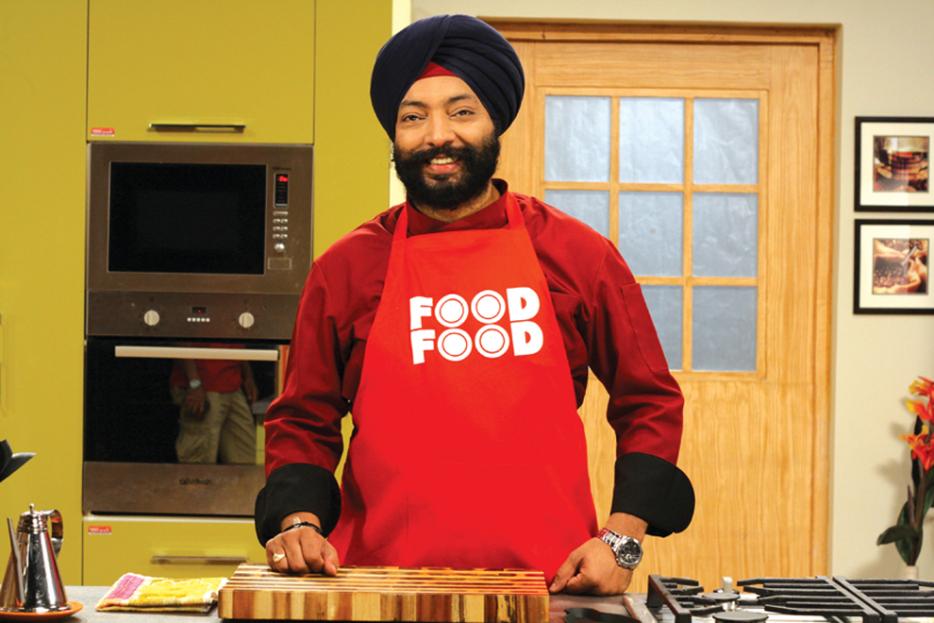The late nineties were a bleak time for my family. Just a couple of years earlier we had been conned out of half of our life savings, and had lost the rest through a series of bad investments. The family printing business was closed in 1998, and that year as the annual December rituals of indulgence and socializing approached, an uncharacteristic gloom lingered in our home. Thank God for the recently launched Food Network.
Long before people started using the term foodie or watching Recipes to Riches, the idea of an entire channel dedicated to cooking sounded absurd. But in light of a somewhat more frugal Christmas, the newly minted Food Network offered a strangely indulgent escape, part pragmatism, part fantasy.
We learned from these TV chefs and their seemingly endless knowledge, adapting their advice and recipes for both our budget and North Indian tastes. It was here that I learned the importance of browning meats, matching flavours or the all-important knife skills that still serve me today. What’s more, the stylings of David Rosengarten or Sara Moulton with their unfamiliar American terminology would, in our house, become inflected with chillies or the classic Panjabi triumvirate of turmeric, cumin and coriander. Though our means had become more modest, our palates expanded, and with it our creativity and experimentalism.
On the other hand, there is something strangely satisfying about sitting in front of a fire with a very modest spread of crackers, bright orange cheese and Philadelphia while watching TV chefs prattle on about only using and serving the very best. Watching the Food Network became an act of wish fulfilment, our envy and gall at twenty dollar cans of crabmeat, the most expensive, exotic cheeses themselves becoming part of the pleasure. What we saw on TV was ‘The Good Life’: an existence comprised not only of the best foods, but an array of aesthetic and materialist indulgence, from stews cooked in ceramic-coated Dutch ovens with a full bottle of Shiraz, to impossibly rich desserts served in crystal martini glasses. We may not have been able to afford these things, but we could immerse ourselves in the idea of them for a few hours each afternoon.
In retrospect, though, it’s also clear that my fetish for these televised gustatory pursuits was not only about a particular ideal of luxury, but of a certain version of culture. Food TV was a glimpse into the rituals and desires of a white majority I didn’t always have easy access to. Perhaps unsurprisingly then, years later, when we inevitably returned to our plain, middle-class comfort, the symbols of the Food Network began to enter our home, and now shiny cookware, countertop appliances and various powders and liquids sit alongside the spices, rolling pin and tea towels that were there before. It is our own experience of the immigrant dream, by way of Jamie Oliver and Michael Smith.
It is against this history that now in 2012 we have all become utterly engrossed by FoodFood, the Indian cooking channel that arrived in Canada last month. In both shape and tenor, it is redolent of the Food Network in the mid-90s, composed of a bewildering array of shows, from those starring channel owner and star chef, Sanjeev Kapoor, to my personal favourite, Turban Tadka, featuring gregarious Sikh chef Harpal Sokhi.
What is most interesting, though—and most reminiscent of Western Food TV—is finding the aspirations of India’s middle class presented through cooking, most obviously to me in the cookware. While many American and Canadian chefs gravitate toward the rustic appeal of cast iron, copper and stainless steel, most of the shows on FoodFood showcase non-stick cookware and their promises of both convenience and futurism. It is a contrast in desire: one group desperately attempting to reclaim a lost, ‘authentic’ past; the other scrambling to get away from a history incessantly threatening to overtake the present.
It is intriguing, too, to watch how the word ‘international’ snakes its way through FoodFood. Though the shows do a great deal to highlight the incomprehensibly kaleidoscopic nature of ‘Indian cuisine’—if there is indeed such a thing—the foreign has become the marker of sophistication, hipness and the contemporary. French sauces, American presentation and the exoticism of Italy and Spain are the ways in which, to invoke the cliché, old classics are given a modern twist. Just as young Canadians Instagram the plates at the hottest restaurants, FoodFood has become a way through which India expresses not only its new wealth and cosmopolitanism, but an explosion in its ever-present obsession with conspicuous consumption.
That said, the bulk of the shows still cater to mostly North Indian tastes. After years of watching Western chefs talk of the strange exoticness of certain spices and ingredients, it is remarkably refreshing to watch a TV host suggest a Sunday morning flatbread contain four green chillies and six spices and not even blink. Similarly, the phenomenon in which dishes contain 10 or 20 ingredients—all familiar and well-stocked in our pantry—is treated as being totally ordinary. To an immigrant all-too accustomed to never seeing the mundane details of one’s life reflected on screen—or having them made seem weird—it is a breath of garam-masala-tinged fresh air.
For the immigrant, the good life is often thought of in financial terms, and the gustatory indulgence and expertise so espoused by food shows has become one more marker of that economic success. Just as important though is finding a comfortable mid-point between competing values and traditions and making them work in the grit and detail of day-to-day life. It is an ideal more easily gestured to than achieved, and thus, we often look for signs of it in the ordinary—like, say, the things we eat.
Half a lifetime ago, watching the Food Network was a chance to escape into an impossible future. I imagine that right now, there must be many in both India and elsewhere who dip into FoodFood as a similar sort of desire. For me, though, flipping back and forth between FoodFood and its Canadian counterparts is now a chance to escape into a seemingly impossible present, one in which my own two solitudes meet in mutuality. And only in the virtual space between two forms of fantasy—of the delight of impractical culinary luxury; and the pleasure of the familiarly foreign—can I ever really feel as if I’m truly at home.
--
Photo by Food Food





